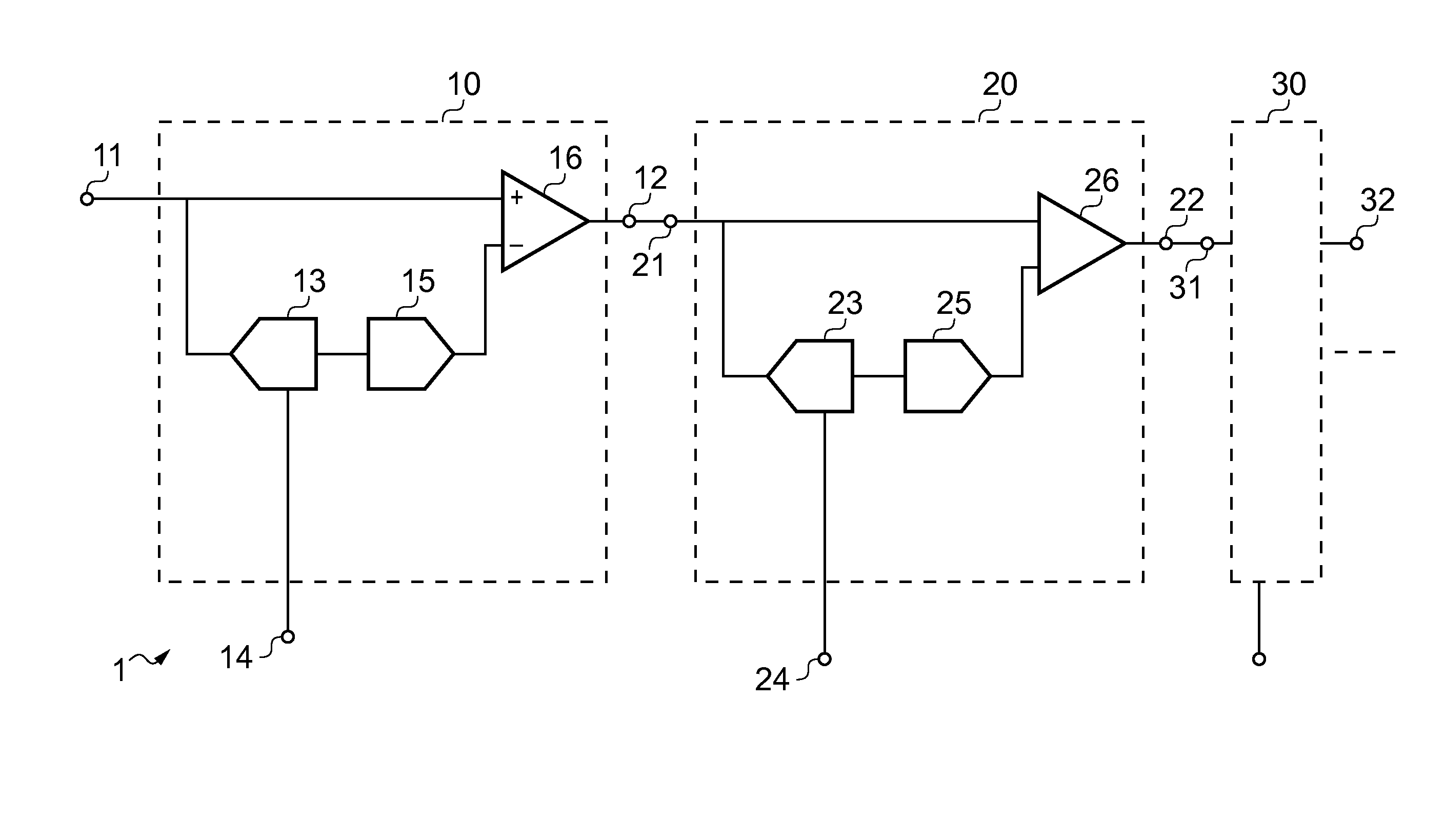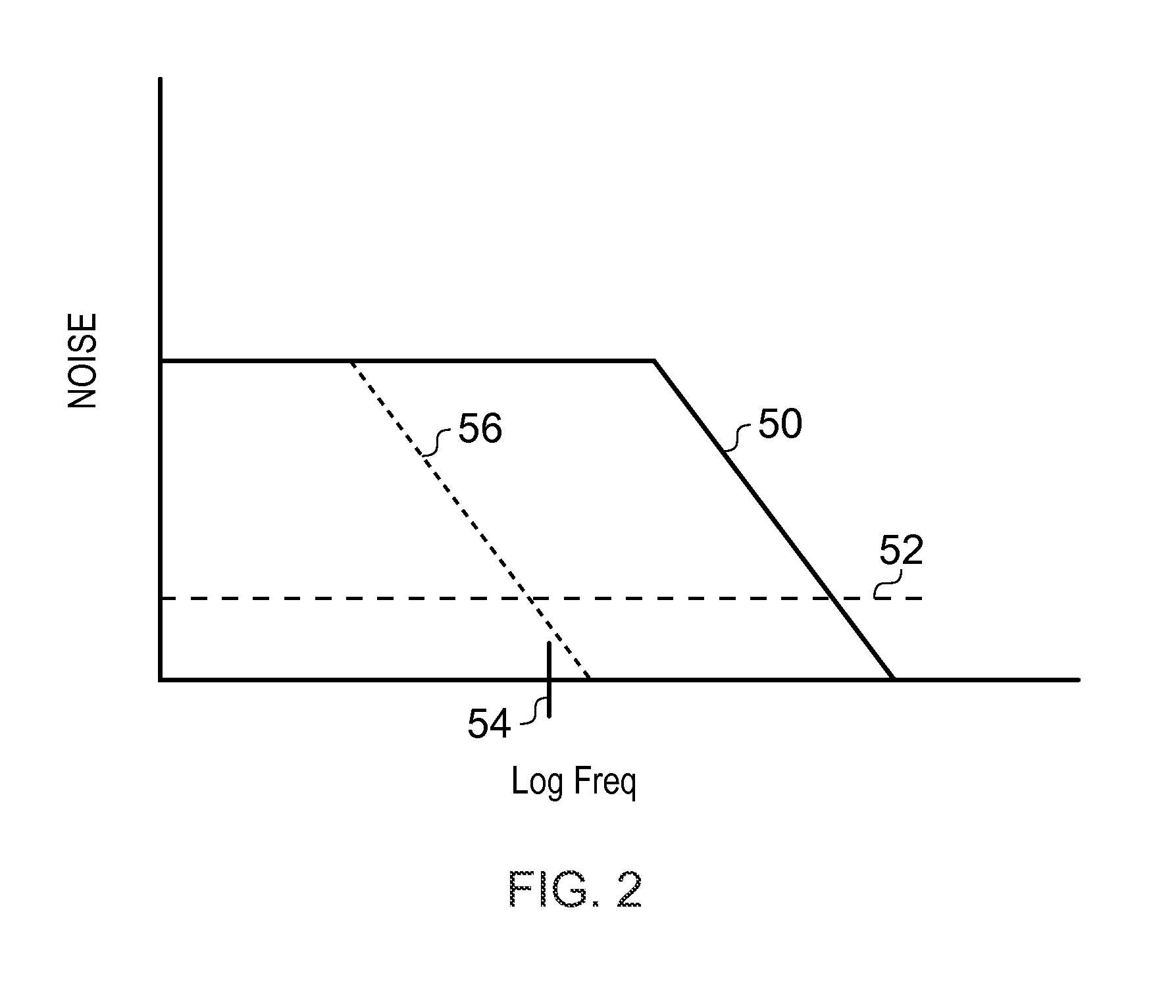Analog to digital converter
a technology converter, applied in the field of can solve the problems of resolution and noise performance, good noise performance, etc., and achieve the effect of reducing the noise power delivered to the n+1th analog to digital converter, high bandwidth, and reducing the bandwidth of the filter
- Summary
- Abstract
- Description
- Claims
- Application Information
AI Technical Summary
Benefits of technology
Problems solved by technology
Method used
Image
Examples
Embodiment Construction
[0029]It is known that individual analog to digital converter stages may be connected in series such that each stage works to perform part of an analog to digital conversion. Such an arrangement is shown in FIG. 1. Here a pipeline analog to digital converter, generally indicated 1, comprises M stages, namely a first stage 10, a second stage 20, a third stage 30 and so on. If each stage only determines a single bit then there may be typically between 12 and 16 stages. However if each stage determines four bits of a conversion result then there might only be three or four stages. For simplicity only the first three stages are shown. Each stage comprises an input, 11, 21, 31 and so on. Each stage except the last, also has an analog output 12, 22, 32 and so on. The internal configuration of each stage, except possibly the last stage which need not form a residue signal is identical and for simplicity only the configuration of the first stage will be described in detail. A signal at the ...
PUM
 Login to View More
Login to View More Abstract
Description
Claims
Application Information
 Login to View More
Login to View More - R&D
- Intellectual Property
- Life Sciences
- Materials
- Tech Scout
- Unparalleled Data Quality
- Higher Quality Content
- 60% Fewer Hallucinations
Browse by: Latest US Patents, China's latest patents, Technical Efficacy Thesaurus, Application Domain, Technology Topic, Popular Technical Reports.
© 2025 PatSnap. All rights reserved.Legal|Privacy policy|Modern Slavery Act Transparency Statement|Sitemap|About US| Contact US: help@patsnap.com



